Skip to main contentProvenanceThe artist
Margo Pollins Schab, Inc., New York, New York
Terra Foundation for the Arts Collection, Chicago, Illinois, 1996
Exhibition HistoryPublished References
Frank Morley Fletcher
(American, 1866–1949)
Ojai Valley
c. 1935
Color woodcut on cream wove paper
Image: 11 11/16 x 9 3/16 in. (29.7 x 23.3 cm)
Sheet: 13 3/4 x 11 1/4 in. (34.9 x 28.6 cm)
Mat: 20 x 16 in. (50.8 x 40.6 cm)
Sheet: 13 3/4 x 11 1/4 in. (34.9 x 28.6 cm)
Mat: 20 x 16 in. (50.8 x 40.6 cm)
Credit LineTerra Foundation for American Art, Daniel J. Terra Collection
Object number1996.18
SignedIn graphite, lower right margin: Morley Fletcher; in block, lower right: M/F [initials separated by an upward pointing arrow]
InterpretationFrank Morley Fletcher's delicately colored woodcut print Ojai Valley presents a spacious vista of a lake and distant mountains whose tops glow in sunlight hues above lavender-tinged slopes. In the rocky foreground, orange wildflowers, hardy shrubs, and a tall flame-like juniper tree grow. The sunset or sunrise sky evokes a subtle spectrum of the translucent hues, ranging from deep blue to golden, that grace the atmosphere when the sun is just below the horizon. This print exemplifies the luminous color Fletcher achieved through his virtuosity in the Japanese method of color woodcut printmaking. It celebrates America the Beautiful as symbolized by Ojai Valley and Lake Casitas. This setting, amidst a national forest in the coastal mountains located between Santa Barbara and Los Angeles, remains a famously picturesque area of California.
Beginning in 1896, Fletcher actively promoted Japanese color woodcut techniques in England and Scotland, just as his contemporary Arthur Wesley Dow championed Japanese aesthetics to American artists, as demonstrated by his landscape color prints (TF 1995.32, TF 1996.4, TF 1996.5, TF 1996.6). The California phase of Fletcher's career began in 1923, when a friend from his Paris student days arranged for him to be a guest artist in Santa Barbara. He soon became director of the Santa Barbara School of the Arts, serving until the Depression caused the school to close in 1930. In 1927, a year after he became a naturalized American citizen, Fletcher made his first color woodcut of California scenery; only two others are known. He made this landscape probably around the time he moved to Ojai, some forty miles east of Santa Barbara, in 1935. It was the last print Fletcher made: severe eye problems caused him to give up printmaking about that time, although he continued to paint and write.
Beginning in 1896, Fletcher actively promoted Japanese color woodcut techniques in England and Scotland, just as his contemporary Arthur Wesley Dow championed Japanese aesthetics to American artists, as demonstrated by his landscape color prints (TF 1995.32, TF 1996.4, TF 1996.5, TF 1996.6). The California phase of Fletcher's career began in 1923, when a friend from his Paris student days arranged for him to be a guest artist in Santa Barbara. He soon became director of the Santa Barbara School of the Arts, serving until the Depression caused the school to close in 1930. In 1927, a year after he became a naturalized American citizen, Fletcher made his first color woodcut of California scenery; only two others are known. He made this landscape probably around the time he moved to Ojai, some forty miles east of Santa Barbara, in 1935. It was the last print Fletcher made: severe eye problems caused him to give up printmaking about that time, although he continued to paint and write.
Margo Pollins Schab, Inc., New York, New York
Terra Foundation for the Arts Collection, Chicago, Illinois, 1996
Exhibition History
On Process: The American Print, Technique Examined, Terra Museum of American Art, Chicago, Illinois (organizer). Venue: Terra Museum of American Art, Chicago, Illinois, January 13–March 2, 2001.
Le Japonisme en Amérique: oeuvres sur papier, 1880–1930 (Japonisme in America: Works on Paper, 1880–1930), Musée d'Art Américain Giverny, France (organizer). Venue: Musée d'Art Américain Giverny, France, September 15–November 30, 2002.
Manifest Destiny, Manifest Responsibility: Environmentalism and the Art of the American Landscape. Terra Foundation for American Art, Chicago, Illinois and Loyola University Museum of Art, Chicago, Illinois (organizers). Venue: Loyola University Museum of Art, May 17–August 10, 2008. [exh. cat.]
Le Japonisme en Amérique: oeuvres sur papier, 1880–1930 (Japonisme in America: Works on Paper, 1880–1930), Musée d'Art Américain Giverny, France (organizer). Venue: Musée d'Art Américain Giverny, France, September 15–November 30, 2002.
Manifest Destiny, Manifest Responsibility: Environmentalism and the Art of the American Landscape. Terra Foundation for American Art, Chicago, Illinois and Loyola University Museum of Art, Chicago, Illinois (organizers). Venue: Loyola University Museum of Art, May 17–August 10, 2008. [exh. cat.]
Green, Nancy E. "Frank Morley Fletcher and the Japanese Color Print." In Second Impressions: Modern Prints and Printmakers Reconsidered; The Tamarind Papers. Vol. 16. Albuquerque, New Mexico: University of New Mexico Press, 1996. Text pp. 37–48.
Brownlee, Peter John. Manifest Destiny / Manifest Responsibility: Environmentalism and the Art of the American Landscape. (exh. cat., Loyola University Museum of Art, Chicago, Illinois). Chicago, Illinois: Terra Foundation for American Art and Loyola University Museum of Art, 2008. Text p. 35 (checklist).
Brownlee, Peter John. Manifest Destiny / Manifest Responsibility: Environmentalism and the Art of the American Landscape. (exh. cat., Loyola University Museum of Art, Chicago, Illinois). Chicago, Illinois: Terra Foundation for American Art and Loyola University Museum of Art, 2008. Text p. 35 (checklist).
There are no additional artworks by this artist in the collection.

